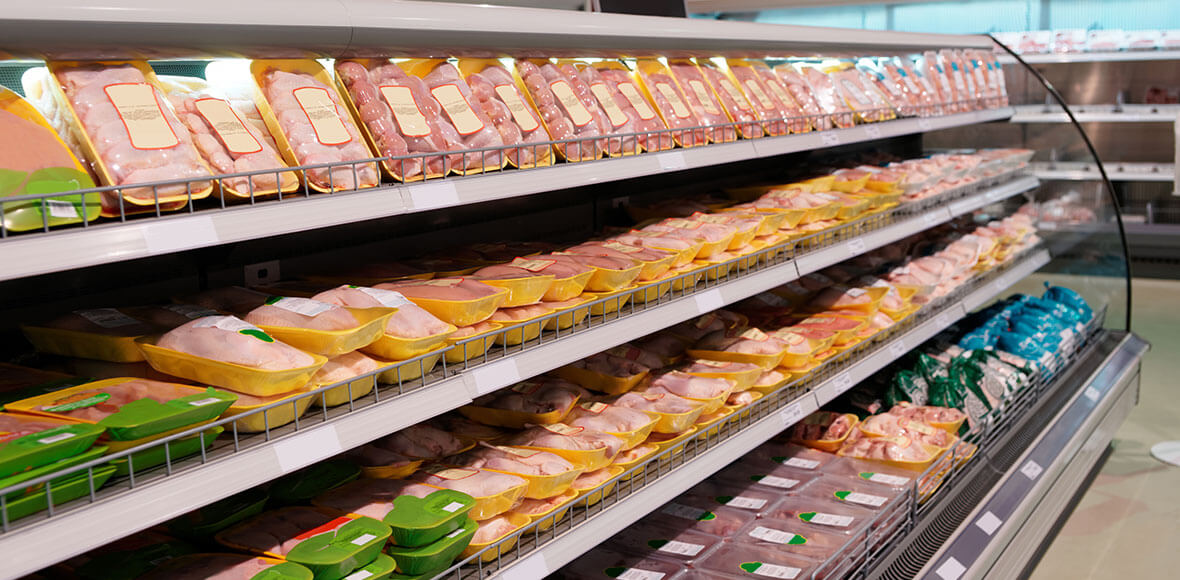
Navigating the Nutrition Label
Sometimes it can feel like a daunting task – reading all those numbers, percentages and claims, then deciphering what they actually mean to you. Yet, the purpose for having these labels is to help you make informed purchase decisions in the supermarket.
The following article will try to simplify the Nutrition Facts Table and labeling, so you can use them with confidence as you shop.
Components of the Food Label
In Canada, all prepackaged foods display the following information on packaging1:
- Nutrition Facts Table
- Ingredient List
- Optional Nutrient Claims
Nutrition Facts Table: This displays 13 core nutrients and information about the calorie content in a specific serving of food.2 It also shows the %Daily Value (%DV) of various nutrients, which indicates if the product contains a lot or a little of a nutrient.3 This can be helpful when choosing foods to make a balanced and nutritious meal. In general, if a food has 5% DV of a nutrient it contains “a little” and if a food has 15% DV or greater the food contains “a lot”.3
Grocery Store Tip: Try not to focus on 1 nutrient to identify a product as being a “healthy choice”. For example, just because the %DV for fat is 0% doesn’t necessarily mean the product is a good option, especially if the sugar content is high. It’s important to look at the entire label when making your healthy choices.
Ingredient List: This is a very important tool to use in addition to the Nutrition Facts Table. The ingredient list lets you know what is actually IN the product. The ingredients are listed in descending order based on weight, except ingredients like spices, which can appear at the end4.
Grocery Store Tip: If you see sugar, salt or oil as one of the first ingredients, have a second look at the Nutrition Facts Table. You may want to see whether there are healthier options available! If you are comparing products, make sure you’re comparing the same serving size. This is the only way to identify true differences in their nutrient content.
Nutrient Claims: Low in Fat, High in Protein, Trans Fat-Free. These are some examples of nutrient claims often seen on food packages. The Canadian Food Inspection Agency enforces the policies and standards set by Health Canada for the use of Nutrient Claims.5, 6 These can be useful to quickly identify whether a product is low in fat, high in protein, etc. However – you’ll still need to look at the Nutrition Facts Table and ingredient list for a complete nutrition picture.
Grocery Store Tip: Use the nutrient claims as a quick way to identify products that could be a healthy option. If the label only has one nutrient claim (i.e. Low in Fat), you may want to dig deeper. Research suggests that certain nutrient claims (i.e. Low-Fat) can create what’s called a “health halo effect”.7 This is when you think a product is very healthy because of one particular claim. Interestingly, this can lead to overeating these foods. If a product is low-fat, but quite high in sugar, you may be eating more than you actually think.6
What about Chicken?
You won’t find a Nutrition Facts Table on fresh meat and poultry like chicken. This is because a chicken’s diet and its activity level change its nutrition profile. You can use information on the CFC website as an estimate of the nutrients found in chicken.
Grocery Store Tip: When buying prepackaged chicken, look at the Nutrition Facts Table and ingredient list. Unlike fresh poultry, anything in a package may have seasonings/sauces added that change its nutrition content. Try to buy prepackaged chicken that has minimal ingredients added. You can always use our healthy recipes to inject some flavour into your next chicken dish!
References
- Health Canada. (2013). Nutrition Labelling. Retrieved December 18, 2013, from http://www.hc-sc.gc.ca/fn-an/label-etiquet/nutrition/index-eng.php
- Health Canada. (2008). Nutrition Facts Table. Retrieved December 18, 2013, from http://www.hc-sc.gc.ca/fn-an/label-etiquet/nutrition/cons/index-eng.php
- Health Canada. (2013). The % Daily Value. Retrieved December 18, 2013, from http://www.hc-sc.gc.ca/fn-an/label-etiquet/nutrition/cons/dv-vq/index-eng.php
- Canadian Food Inspection Agency. (2011). Basic Labelling Requirements. Retrieved December 18, 2012, from http://www.inspection.gc.ca/english/fssa/labeti/guide/ch2e.shtml
- Canadian Food Inspection Agency. (2013). CFIA At A Glance. Retrieved September 21, 2013, from http://www.inspection.gc.ca/about-the-cfia/organizational-information/at-a-glance/eng/1358708199729/1358708306386
- Canadian Food Inspection Agency. (2011). Chapter 7: Nutrient Content Claims. Retrieved September 21, 2013, from http://www.inspection.gc.ca/english/fssa/labeti/guide/ch7be.shtml
- Wansink, B. (2010). From mindless eating to mindless eating better. Psychology & Behaviour, 100, 454-463.